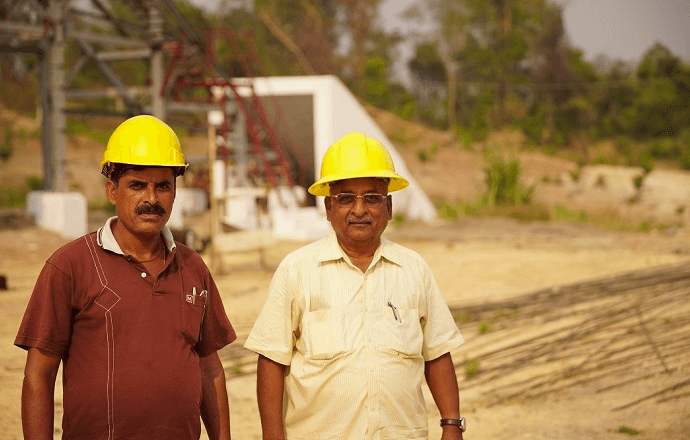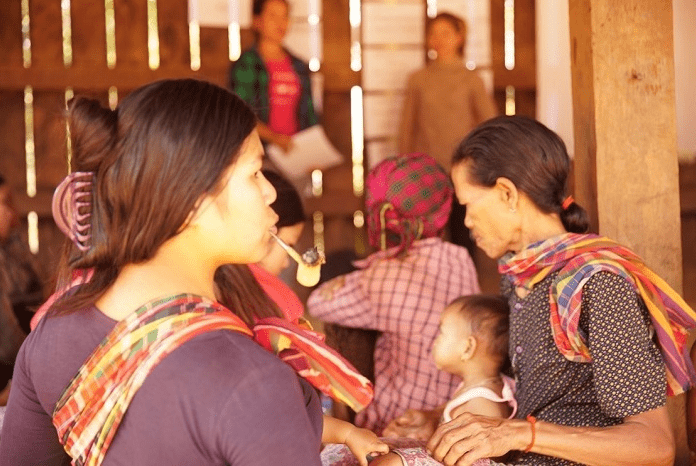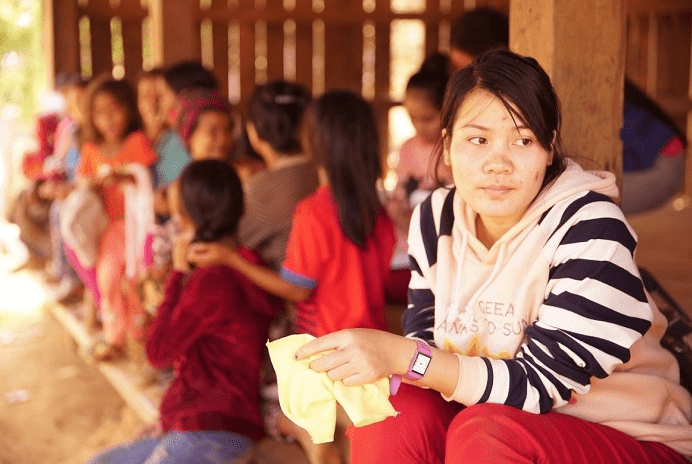Feature
In Cambodia, a mining company & an indigenous village are working together for better development

Tucked away in dusty red hills at the Vietnam border, a few dozen wooden longhouses form Peak Village, a community that has little in common with the rest of Cambodia, much less the representatives of an Indian corporation.
The houses, propped on stilts, are home to a few hundred ethnic Jarai. Numbering about 200,000, most Jarai live in Vietnam’s Central Highlands, but there is a sizable population across the border. Here in Cambodia’s Ratanakiri province, they are among the 17 ethnic groups that make up the Khmer Loeu, or upland Khmer.
Disturbing the village’s isolation is Mesco Gold, an Indian mining company that’s setting up operations here to extract plentiful gold that was recently discovered. After a contentious relationship between the villagers and another mining company stalled prior business, Peak Village community members and Mesco Gold decided this time should be different.
“The companies need to understand the culture of the village,” says Sev Jin, the village’s chief. “They need to learn who the elders are. They need to learn what the traditions are. Once the companies learn about these things, there won’t be any problems."
Development and Partnership in Action, or DPA, a Cambodian organization that helps communities develop themselves from the grassroots level, is working with the people of Peak Village. DPA is a partner of Pact’s Mekong Partnership for the Environment project, or MPE, which has been advancing socially and environmentally responsible development across Asia’s Lower Mekong region since 2013. Both DPA and MPE share the philosophy that to solve a problem, you must first listen to the people who are most affected.
Through MPE, Pact facilitates this listening by serving as a convener whose role is to foster constructive dialogue among all stakeholders. In Peak Village, that means engaging not just the villagers but also Mesco Gold and local government officials like Sev Jin. MPE encourages all parties to use the Environmental Impact Assessment (EIA) process, which, when done right, ensures meaningful public participation in development decision-making and minimizes problems for all.
It's why DPA runs workshops in Peak Village on the EIA process. One recent workshop, attended by 20 women, strengthened their understanding of the process and why their participation is critical.
These women are, as Sev Jin says, the great missing voice in negotiations and activism – often unable to participate in development decisions because they must stay home to look after their families, or because their husbands are not interested in allowing them to engage in such public matters.
One highlander woman spoke emotionally about the need to look after their land, especially their forests. For the animist Jarai, forests are a place of worship and a source of sustenance; their concerns are not just environmental but also spiritual.
"There are things that seem not very important to others that are important to our people,” Sev Jin says.

In the past, failing to pay attention to such local concerns has delayed and even stopped large-scale infrastructure and industrial projects. MPE believes that regional establishment of the EIA process – thorough, inclusive assessments of projects’ potential impacts and ways to alleviate them – will prevent many of these stumbling blocks.
Mesco Gold knows it is navigating unfamiliar turf, despite its parent company’s experience around the world. Ganga Raju, one of the managers on site here, stresses that each new location brings unique challenges and opportunities. This is especially true in Peak Village.
As is often the case, indigenous people here face many challenges. Ratanakiri has the worst health indicators in Cambodia. The life expectancy is 39 for men and 43 for women. Cholera, malaria and tuberculosis, diseases that are under control in much of the developing world, are still pervasive here. Ten percent of children die before the age of five.
Add to this a new long-term mining operation in their area. Indigenous people – typically not integrated into society and lacking official documentation such as land titles – can be especially vulnerable to detrimental impacts when companies extract the resources upon which their communities are located.
But Peak Village is hoping to buck the trend. With DPA equipping its people with the knowledge and resources they need to advocate for their rights, and with Mesco Gold professing a desire to do right by the community, Ratanakiri’s first mining project has the potential to become a positive example of collaborative development and dispute resolution in an industry that too often makes headlines for just the opposite.

As a start, Mesco has offered to invest in development to help address some of the community’s socio-economic and health concerns. They’ve proposed putting running water into local homes and providing English language classes to strengthen people’s livelihood prospects. Most important, Mesco is hiring local intermediaries to help the company explain its intentions and understand what villagers want.
"We want to make sure the immediate neighbors, the villages nearby, benefit,” Raju says. "We try to get labor from the area. They benefit from the employment, and we benefit because getting labor from abroad is costly. It’s always cheaper to train local labor."
Raju says the company is aware of the potential pitfalls of failing to work with the community.
"Local people should not feel that we are robbing them,” he says. "We should never create a fear that 'these people have come to rob us.' We should try to educate them about what we are trying to do, about how our work can help them."
To ensure communication and facilitate multi-stakeholder dialogues, DPA and other civil society organizations are building a network of community mining focal persons (CFMPs) in Cambodia. These CFMPs are locals, often from indigenous communities, who are affected by the mining operations popping up around them. They gain knowledge about the mining industry and learn communication skills from DPA trainings, and they serve as critical intermediaries between villagers, the private sector and even the government. They use their skills to advocate for positive changes to the mining companies’ development plans and activities.
Building local trust, though, is a long slog – not just for Mesco but also for DPA.
"At first they barely talked to me,” says DPA’s Sakphea Houn. “They did not respond when I talked to them, they just talked to their friends. Now they are not shy at all, except for a few people. They can now analyze the problem that they face, but more importantly they can meet and discuss the issues with the companies on more level ground."
Sev Jin says he knows he must educate himself about the mining industry and the EIA process so that he and his fellow villagers can make their voices heard. He says he has one responsibility: to solve problems.
These days, he adds, the problems aren’t what they used to be. He finds himself spending less time on neighborhood disputes and more on becoming familiar with indigenous rights, including concepts such as free, prior and informed consent, and processes like EIA.
"I didn’t really know anything about indigenous people’s rights,” Sev Jin says. “That’s something I’ve had to learn myself from NGOs.”
It’s the same in many of the places where MPE works. Development projects have many stakeholders with shared challenges – a lack of information and transparency, miscommunication, and few opportunities for meaningful public participation. The result is often conflict and delays.
But shared challenges can lead to a shared goal, too, albeit a daunting one: to create a new environment where all parties, from the grassroots to the boardroom, can engage on level ground.